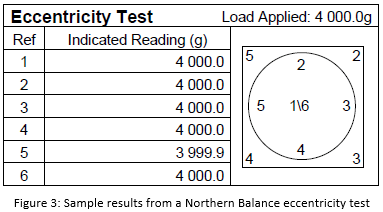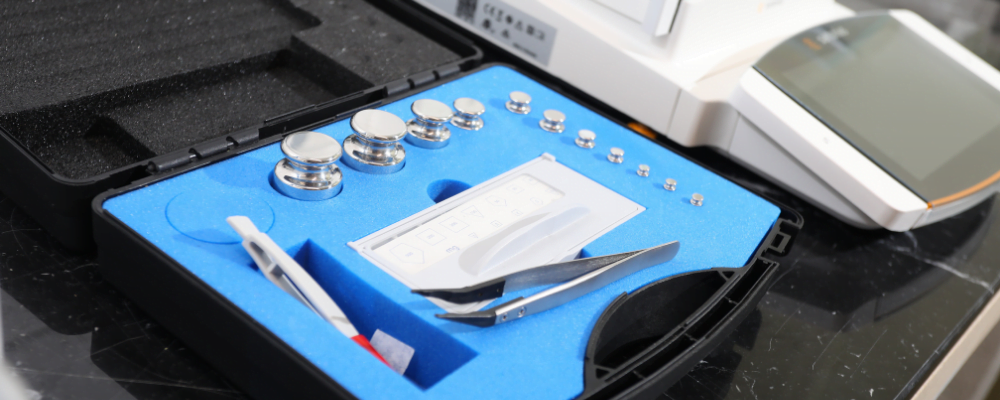What role do calibrations play in helping you achieve measurement confidence and avoid the detrimental impact of inaccuracies? We put some FAQs to Mike Glew, Quality Manager at Northern Balance for his perspective on how data obtained from calibration tests help to identify risks and safeguard your critical weighing processes.
We hear a lot about measurement confidence. Can you tell us about it and why it’s important?
I’d describe measurement confidence as the level of assurance you have in your equipment to produce accurate and reliable weighing results. The level of accuracy and reliability required will vary from business to business and even process to process. However, accuracy should always align with the tolerances set out in product/ service specifications, satisfy laid down industry standards and fulfil the requirements in your own Quality Management System (QMS). This will mitigate against non-compliance and alleviate the impact on the quality of your products and services.
So, how do calibrations provide measurement confidence?
During a traceable or UKAS calibration, engineers will run your equipment through a range of tests to determine its accuracy and traceability to national standards held at the National Physical Laboratory (NPL). Each test provides a set of meaningful data to help you understand the accuracy and reliability of your weighing equipment.
Which tests are performed and what data should we expect to see?
Calibration laboratories such as Northern Balance will conduct several tests to determine the accuracy and reliability of your equipment before recording results in your calibration certificate.
1. Linearity test:
Linearity gauges your equipment’s accuracy against weights of a known value by placing a series of weights between zero and the equipment’s maximum capacity on the centre of the load receptor.

2. Repeatability test:
Repeatability determines the consistency of weighing results when the same load is applied in succession under constant test conditions. At Northern Balance, the number of times the load is applied depends on whether a traceable or UKAS calibration option is chosen, but will not be less than three times.

3. Eccentricity test:
To determine any off-centre errors, eccentricity tests the accuracy of weighing results when a constant test load is applied to different positions of the load receptor.

Do UKAS calibrations provide a higher level of measurement confidence?
In short, yes. Although the same tests may be performed and applied test loads are traceable to NPL, linearity and repeatability tests for UKAS calibrations are performed using a wider range of test points in comparison to traceable calibrations. Put simply, UKAS calibrations provide more data to help to identify deviations.
Additionally, an Uncertainty of Measurement (UoM) is calculated and presented on a UKAS calibration certificate. This denotes the potential deviation from the equipment’s displayed result and should be considered when assessing the compliance of your products and services. The smaller the uncertainty, the greater level of accuracy in the displayed result.
To mitigate any impact on quality and compliance, it’s important to make the right choice when selecting a calibration type. UKAS calibrations provide more comprehensive results and are suited to organisations that operate in highly regulated markets where measurement confidence is critical. If the measurement process is not critical, a traceable calibration may be adequate.
It’s also important to note that UKAS calibrations are only performed by calibration laboratories (including Northern Balance) who have achieved UKAS accreditation against ISO 17025 General requirements for the competence of testing and calibration laboratories.
How should test results be applied to ensure accuracy and reliability?
By comparing the reported test results against the tolerances set out in your QMS, you can determine the suitability of your weighing equipment for the task in hand and mitigate compromises to quality and compliance.
It’s always a good idea to compare calibration results over time to monitor trends in performance and ensure that results don’t fall out of tolerance. Any continual shifts in test results could indicate the need for shorter calibration cycles i.e. annually to bi-annually or even call for servicing and repairs.
Do you have any final advice for ensuring measurement confidence?
For absolute measurement confidence, it’s important to calibrate at the right frequencies. So, we’ve created a starter guide to highlight the main considerations. Additionally, you may wish to consider a preventative maintenance plan with inclusive calibrations and 24/7 online certificate access for a programme of bespoke support and actionable insights all year round.





